Ditapis dengan

assignment materials course : Supply Chain Management
- Edisi
- Supply Chain Management
- ISBN/ISSN
- -
- Deskripsi Fisik
- illus,; 30 cm
- Judul Seri
- Supply Chain Management
- No. Panggil
- CC STC ASS s C1
- Edisi
- Supply Chain Management
- ISBN/ISSN
- -
- Deskripsi Fisik
- illus,; 30 cm
- Judul Seri
- Supply Chain Management
- No. Panggil
- CC STC ASS s C1

Presentations materials Course : Supply Chain Management
- Edisi
- Supply Chain Management
- ISBN/ISSN
- -
- Deskripsi Fisik
- illus,; 30 cm
- Judul Seri
- Supply Chain Management
- No. Panggil
- CC STC PRE s C1
- Edisi
- Supply Chain Management
- ISBN/ISSN
- -
- Deskripsi Fisik
- illus,; 30 cm
- Judul Seri
- Supply Chain Management
- No. Panggil
- CC STC PRE s C1

Course Outline & Study Guide : Supply Chain Management
- Edisi
- Supply Chain Management
- ISBN/ISSN
- -
- Deskripsi Fisik
- 18 page
- Judul Seri
- Supply Chain Management
- No. Panggil
- CC STC COS s C1
- Edisi
- Supply Chain Management
- ISBN/ISSN
- -
- Deskripsi Fisik
- 18 page
- Judul Seri
- Supply Chain Management
- No. Panggil
- CC STC COS s C1

How to supply a frigate
Abstract Purpose – When deploying a frigate to the Gulf of Aden as a part of the Operation Atalanta, the Norwegian Defence outsourced logistics to a TPL provider. The purpose of this paper is to explore the cooperation between the Defence and the TPL provider during the operation. Design/methodology/approach – A qualitative design was chosen. Semi-structured interviews were combined with r…
- Edisi
- International Journal of Physical Distribution & L
- ISBN/ISSN
- -
- Deskripsi Fisik
- 16 halaman
- Judul Seri
- How to supply a frigate
- No. Panggil
- ATC PO TOR a

Eco-efficiency analysis of industrial system in China: A data envelopment ana…
Eco-efficiency is an instrument for sustainability analysis, indicating how efficient the economic activity is with regard to nature's goods and services. This paper conducts an ecoefficiency analysis for regional industrial systems in China by developing data envelopment analysis (DEA) based models. Using real data of 30 provinces in China, an empirical study is employed to illustrate the patt…
- Edisi
- Elseiver
- ISBN/ISSN
- -
- Deskripsi Fisik
- 11 halaman
- Judul Seri
- Eco-efficiency analysis of industrial system in China: A data envelopment analysis approach
- No. Panggil
- ATC PO BIN a

CHINDIA – the changing times of China and India bilateral relations
Abstract Purpose – China and India are pursuing cooperative arrangements while simultaneously maintaining their own independence, especially with respect to foreign policy. Today, decisions about cooperation are made on a case-by-case basis, opting for cooperation when necessary and competition where this strategy is justified. Maintaining a balance in a contradiction-ridden relationship i…
- Edisi
- Management Research Review
- ISBN/ISSN
- -
- Deskripsi Fisik
- 19 halaman
- Judul Seri
- CHINDIA – the changing times of China and India bilateral relations
- No. Panggil
- ATC PO KRI a

A Review of Russian Ice-Breaking Tariff Policy on the Northern Sea Route 1991…
ABSTRACT. In recent years, interest in the economic potential of the Arctic has been mounting, facilitated by environmental developments caused by climate change. In this context, the viability of shipping in Arctic waters is pivotal. This article explores the interplay of market considerations and the non-market drivers (climatic, navigational and political components) regarding the viability …
- Edisi
- ResearchGate
- ISBN/ISSN
- -
- Deskripsi Fisik
- 16 halaman
- Judul Seri
- A Review of Russian Ice-Breaking Tariff Policy on the Northern Sea Route 1991 – 2014
- No. Panggil
- ATC PO DAR a

Assessing the cultural intelligence and task performance equation Mediating r…
Abstract Purpose – Organizations in India are multicultural in nature. In this context, cultural intelligence is a tool, which can increase an individual’s ability to interact with people outside his/her culture. The purpose of this paper is to analyze the impact of cultural intelligence on task performance as well as to investigate the mediating role of cultural adjustment between the two.
- Edisi
- Cross Cultural Management
- ISBN/ISSN
- -
- Deskripsi Fisik
- 26 halaman
- Judul Seri
- Assessing the cultural intelligence and task performance equation Mediating role of cultural adjustment
- No. Panggil
- ATC PO JEE a

Bank asset allocation: the effectiveness of market monitoring
Abstract Purpose – The purpose of this paper is to study the effectiveness of market discipline on banks’ risk-taking behavior based on how swiftly banks respond to market information. Design/methodology/approach – A simplified incentive model provides the necessary justification for two types of market disciplines: first, monitoring by uninsured market participants, and second, risk p…
- Edisi
- Journal of Advances in Management Research
- ISBN/ISSN
- -
- Deskripsi Fisik
- 24 halaman
- Judul Seri
- Bank asset allocation: the effectiveness of market monitoring
- No. Panggil
- ATC PO GRA a

Are freight futures markets efficient? Evidence from IMAREX
a b s t r a c t The International Maritime Exchange (IMAREX) is the leading regulated marketplace for trading and clearing shipping freight derivatives. We investigate for the first time whether the IMAREX freight futures market is efficient over the daily and weekly horizons. To this end, we address the question in both a statistical setting and an economic setting by employing an extensive d…
- Edisi
- International Journal of Forecasting
- ISBN/ISSN
- -
- Deskripsi Fisik
- 16 halaman
- Judul Seri
- Are freight futures markets efficient? Evidence from IMAREX
- No. Panggil
- ATC PO LAM a

An investigation into hospitality cruise ship work through the exploration of…
Abstract Purpose – The purpose of this paper is to investigate, through metaphor analysis, the complex nature of the work undertaken by waiters and pursers on-board cruise ships. This is an under-researched field and empirical research has produced some interesting perceptions that these groups of workers have of themselves, of others, and of the world in which they work and live. Design/met…
- Edisi
- Employee Relations
- ISBN/ISSN
- -
- Deskripsi Fisik
- 17 halaman
- Judul Seri
- An investigation into hospitality cruise ship work through the exploration of metaphors
- No. Panggil
- ATC PO ADA a

Application of DEA in analyzing a bank’s operating performance
abstract This article takes 117 branches of a certain bank in Taiwan in 2006 as the research subject and introduces ata envelopment analysis (DEA) to evaluate the operating performances of business units of this bank to provide the reference for a bank’s managers in determining operation strategies. The result indicates that, in overall technical efficiency, the case bank has many inefficien…
- Edisi
- Expert Systems with Applications
- ISBN/ISSN
- -
- Deskripsi Fisik
- 9 halaman
- Judul Seri
- Application of DEA in analyzing a bank’s operating performance
- No. Panggil
- ATC PO TYR a

Antecedent of purchase intention: online seller reputation, product category …
Abstract Purpose – This paper aims to examine the antecedent of purchase intention: online seller reputation, product category and surcharge. Design/methodology/approach – This paper uses five experimental designs to explore the seller reputation, product category and surcharge effects in Internet shopping. The authors chose one seller of low reputation and one seller of high reputation fr…
- Edisi
- Internet Research
- ISBN/ISSN
- -
- Deskripsi Fisik
- 18 halaman
- Judul Seri
- Antecedent of purchase intention: online seller reputation, product category and surcharge
- No. Panggil
- ATC PO MIN a

A comparative case study on metadata schemes at Swedish governmental agencies
Abstract Purpose – The purpose of the paper is to study the development and implementation of metadata schemes in Swedish governmental agencies, in order to gain a better understanding of recordkeeping practices in contemporary organisations and of the use of metadata and practical implementation of metadata schemes. Design/methodology/approach – The study is based on two case studies. Th…
- Edisi
- Records Management Journal
- ISBN/ISSN
- -
- Deskripsi Fisik
- 14 halaman
- Judul Seri
- A comparative case study on metadata schemes at Swedish governmental agencies
- No. Panggil
- ATC PO NIL a

laporan pelaksanaan kegiatan supply chain (LOGISTIC) management
- Edisi
- -
- ISBN/ISSN
- -
- Deskripsi Fisik
- 17 halaman
- Judul Seri
- -
- No. Panggil
- IPC REP 2018 CHA c C.1
- Edisi
- -
- ISBN/ISSN
- -
- Deskripsi Fisik
- 17 halaman
- Judul Seri
- -
- No. Panggil
- IPC REP 2018 CHA c C.1

Benchmarking Russian and Finnish food industry supply chains
The purpose of this paper is to examine the differences between Finnish and Russian, namely Karelian, food industry supply chains. The main objective is to find out the reasons for low productivity in Russian food industry from supply chain management (SCM) point of view.
- Edisi
- Vol. 16 No. 3, 2009
- ISBN/ISSN
- -
- Deskripsi Fisik
- 19 p.
- Judul Seri
- Benchmarking: An International Journal
- No. Panggil
- ATC LO TOU b

Problems in the onward and upward phase of APS system implementation
Studies conducted on advanced planning and scheduling (APS) systems have found problems in the marginal or negative returns from APS systems when they are implemented inmmanufacturing planning and control processes. The purpose of this study is to examine what problems exist in the onward and upward phase of the APS system implementation and how the individual, technical and organizational (ITO…
- Edisi
- -
- ISBN/ISSN
- -
- Deskripsi Fisik
- 23 p.
- Judul Seri
- -
- No. Panggil
- ATC LO IVE p

Building humanitarian supply chain relationships: lessons from leading practi…
The purpose of this paper is to advance thought and practice on supply chain relationship building, in the context of humanitarian logistics, drawing on lessons from leading practitioners.
- Edisi
- Vol. 1 No. 1, 2011 pp. 32-49
- ISBN/ISSN
- -
- Deskripsi Fisik
- 21 p .
- Judul Seri
- Journal of Humanitarian Logistics and Supply Chain Management
- No. Panggil
- ATC LO LAC b
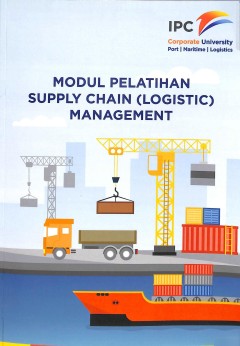
Modul Pelatihan : Supply Chain (Logistic) Management
This module is an introductory to Supply Chain Management, anad part of module of FIATA Higher Diploma in Supply Chain Management
- Edisi
- -
- ISBN/ISSN
- -
- Deskripsi Fisik
- 92 p., 29.5 cm.
- Judul Seri
- -
- No. Panggil
- IPC GUI SUP s

The influence of relational competencies on supply chain resilience: a relati…
The purpose of this research is to explore the resilience domain, which is important in the field of supply chain management; it investigates the effects relational competencies have for resilience and the effect resilience, in turn, has on a supply chain’s customer value.
- Edisi
- Vol. 43 No. 4, 2013
- ISBN/ISSN
- -
- Deskripsi Fisik
- 24 p.
- Judul Seri
- The purpose of this research is to explore the resilience domain, which is important in the field of supply chain management; it investigates the effects relational competencies have for resilience an
- No. Panggil
- ATC LO MAR t

Theoretical perspectives on information sharing in supply chains
The purpose of this paper is to explore what theoretical lenses have been used to analyze and understand information sharing in supply chains. The paper elaborates on the predominant theories and discusses how they can be integrated to research different aspects of information sharing. Design/methodology/approach – The paper carried out a structured literature review by using a combination of…
- Edisi
- 19/5/6 (2014) 609–625
- ISBN/ISSN
- 1359-8546
- Deskripsi Fisik
- 19 p.
- Judul Seri
- Supply Chain Management: An International Journal
- No. Panggil
- ATC LO KEM t

Twenty years of IJLM: evolution in research
The purpose of this paper is to evaluate research trends observed in the International Journal of Logistics Management (IJLM) during its first 20 years of publication. Design/methodology/approach – A content analysis was conducted of the IJLM’s first 20 years of publication (330 articles in total) to identify changing trends in subject matter, use of theory, type of research methodology, an…
- Edisi
- Vol. 23 No. 1, 2012 pp. 4-30
- ISBN/ISSN
- 0957-4093
- Deskripsi Fisik
- 29 p.
- Judul Seri
- The International Journal of Logistics Management
- No. Panggil
- ATC LO TRO t C.1

Workplace safety in the supply chain- a review of the literature and call for…
The purpose of this paper is to review the literature and call for additional research into the human, operational, and regulatory issues that contribute to workplace safety in the supply chain.
- Edisi
- Vol. 19 No. 1, 2008 pp. 65-83
- ISBN/ISSN
- 0957-4093
- Deskripsi Fisik
- 21 p .
- Judul Seri
- The International Journal of Logistics Management
- No. Panggil
- ATC LO CAN w C.1

Collaboration in Finnish-Russian supply chains: Effects on performance and th…
The management of international supply chains may significantly contribute to the successful outcome of exports. The purpose of this paper is to investigate the level of supply chain collaboration in an uncertain cross-border context, and whether it improves supply chain performance The moderating role of export experience and intensity to the collaboration-performance relationship is also in…
- Edisi
- Vol. 3 No. 3, 2008 pp. 246-265
- ISBN/ISSN
- 1746-5265
- Deskripsi Fisik
- 22 p.
- Judul Seri
- Baltic Journal of Management
- No. Panggil
- ATC LO LON c
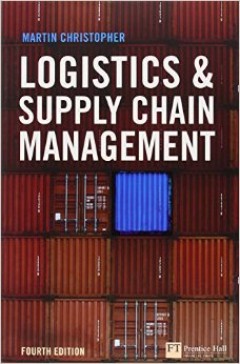
Logistics & supply chain management
When the first edition of this book was published in 1992, supply chain management as an idea was still in its infancy and relatively few companies had made it a priority. The same was true for logistics management, although its precursor, distribution management, was increasingly being recognised as important both in terms of cost and for its potential impact on sales. In the intervening yea…
- Edisi
- Fourth Edition
- ISBN/ISSN
- 978-0-273-73112-2
- Deskripsi Fisik
- xi, 269p
- Judul Seri
- -
- No. Panggil
- TXT LO CHR l
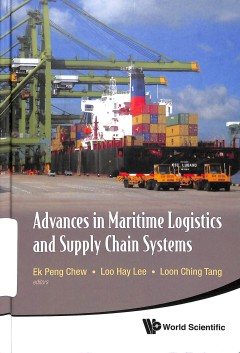
Advances in Maritime Logistik and Supply Chain Systems
This timely book discusses the recent developments in maritime logistics, an important specialized area for the global economy. It includes issues such as the recent economic crisis, port competition and development, and provides insights and trends relating to these issues. Consisting of renowned researchers worldwide, the primary objective of the book identifies some of the new problems and c…
- Edisi
- -
- ISBN/ISSN
- 13-978-981-4329-85-9
- Deskripsi Fisik
- xvi, 315 p. ; 26 cm.
- Judul Seri
- -
- No. Panggil
- TXT LO SON m
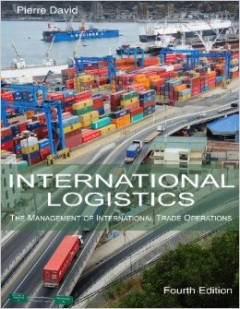
International Logistics: The Management of International Trade Operations
A full-color textbook covering all of the concepts of international logistics. This textbook is written from the perspective of the users, those managers who are actively exporting or importing goods or are otherwise involved in international trade operations. All of the relevant issues are thoroughly explained, including documentation, terms of payment, terms of trade (2010 Incoterms rules), e…
- Edisi
- 4th ed.
- ISBN/ISSN
- 978-0-9894906-0-3
- Deskripsi Fisik
- xxvi, 695p. ; 28cm.
- Judul Seri
- -
- No. Panggil
- TXT LO DAV i
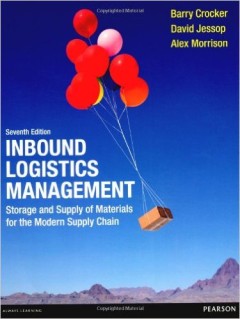
Inbound Logistics Management : Storage and Supply of Materials for the Modern…
This well-established text provides an authoritative and comprehensive overview of the practice and supporting systems relating to the storage and supply of materials, from elementary principles and simplest methods to the most advanced automated operations. It is an invaluable guide to inbound logistics for both students and practitioners.
- Edisi
- 7th ed.
- ISBN/ISSN
- 978-0-273-72048-5
- Deskripsi Fisik
- xviii, 317p. ; 25cm.
- Judul Seri
- -
- No. Panggil
- TXT LO CRO i C.1
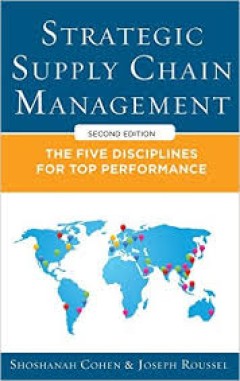
Strategic Supply Chain Management : The Five Disciplines for Top Performance
The global landscape has changed dramatically since the first edition of Strategic Supply Chain Management established itself as the authority on creating value and achieving competitive advantage from the supply chain. Shorter economic cycles, more-frequent natural disasters, higher costs in low-cost countries, more-restricted access to working capital, and greater focus on sustainability have…
- Edisi
- 2nd ed.
- ISBN/ISSN
- 978-0-07-181308-2
- Deskripsi Fisik
- xvii, 298p. ; 24cm.
- Judul Seri
- -
- No. Panggil
- TXT LO COH s C.1
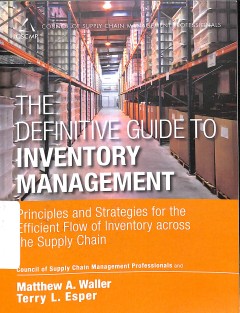
The definitive guide to inventory management : principles and strategies for …
The definitive guide to inventory management : principles and strategies for the efficient flow of inventory across the supply chain
- Edisi
- -
- ISBN/ISSN
- 978-0-13-344882-5
- Deskripsi Fisik
- xii, 195 p.; 25 cm
- Judul Seri
- -
- No. Panggil
- TXT LO WAL d

The logistics and supply chain toolkit : over 90 tools for transport, warehou…
- Edisi
- -
- ISBN/ISSN
- 978-0-7494-6808
- Deskripsi Fisik
- xi, 313 p, 22 cm
- Judul Seri
- -
- No. Panggil
- LO RIC t
- Edisi
- -
- ISBN/ISSN
- 978-0-7494-6808
- Deskripsi Fisik
- xi, 313 p, 22 cm
- Judul Seri
- -
- No. Panggil
- LO RIC t
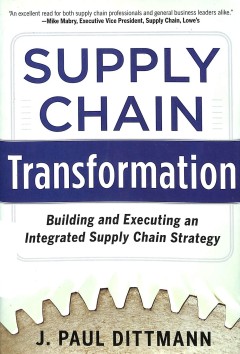
Supply chain transformation : building and executing an integrated supply cha…
- Edisi
- -
- ISBN/ISSN
- 978-0-07-179830-3
- Deskripsi Fisik
- iii, 250 p., ; 24 cm ; index
- Judul Seri
- -
- No. Panggil
- LC 658.785 DIT s
- Edisi
- -
- ISBN/ISSN
- 978-0-07-179830-3
- Deskripsi Fisik
- iii, 250 p., ; 24 cm ; index
- Judul Seri
- -
- No. Panggil
- LC 658.785 DIT s
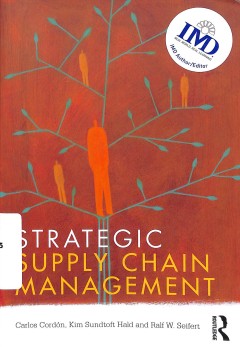
Strategic supply chain management
The supply chain is at the heart of every successful business organization's decision-making process. This textbook explains how to create a winning supply chain management strategy by spotlighting how senior executives in European and US companies have turned their supply chains into strategic weapons designed to convert threats, risks and outside pressures into competitive advantages. Strate…
- Edisi
- -
- ISBN/ISSN
- 978-0-415-59176-8
- Deskripsi Fisik
- ix, 278 p., ; 24 cm
- Judul Seri
- -
- No. Panggil
- LC 658.785 COR s

Managing logistics and supply chain challenges : singapore insights and persp…
Strategically located in Asia, Singapore has built on its geographical advantage to become one of the world s leading logistics hubs and a preferred location for leading manufacturers to establish regional distribution centres. Its world-class infrastructure, excellent connectivity, efficient customs, pro-business environment, educated workforce and stable government have made Singapore a compe…
- Edisi
- -
- ISBN/ISSN
- 978-981-4524-865
- Deskripsi Fisik
- xx, 467 p, 23 cm
- Judul Seri
- -
- No. Panggil
- LC 658.785 WEN m
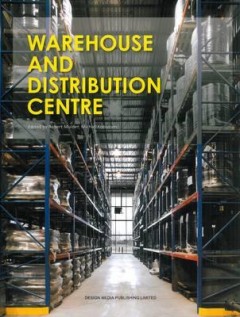
Warehouse and Distribution Centre
- Edisi
- -
- ISBN/ISSN
- 978-988-15663-9-3
- Deskripsi Fisik
- 250 p., ; 26 cm
- Judul Seri
- -
- No. Panggil
- REF LO MUL w
- Edisi
- -
- ISBN/ISSN
- 978-988-15663-9-3
- Deskripsi Fisik
- 250 p., ; 26 cm
- Judul Seri
- -
- No. Panggil
- REF LO MUL w
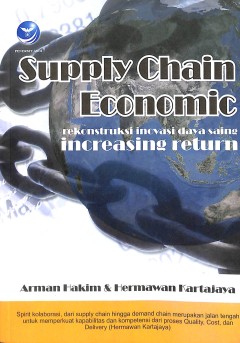
Supply chain economic : rekonstruksi inovasi daya saing increasing return
Buku ini mengulas dengan menarik berbagai aspek tentang pertumbuhan ekonomi, peran inovasi teknologi dan network. Sangat direkomendasikan untuk dibaca oleh penentu kebijakan ekonomi maupun pengambil keputusan di perusahaan.
- Edisi
- -
- ISBN/ISSN
- 978-979-29-3451-9
- Deskripsi Fisik
- x, 132 p., 21 cm
- Judul Seri
- -
- No. Panggil
- LC 621.86 HAK s

Integrating corporate social responsibility and other strategic foci in a dis…
The purpose of the paper is to explore the challenges of integrating corporate social responsibility (CSR) with other strategic foci into the supply/contractor chain, both conceptually and empirically, with a focus on one sectorial case: the Norwegian upstream petroleum industry. It compares contradictory theories of strategic focus and explores their implications for the organisation of the su…
- Edisi
- VOL. 7 NO. 2 2007, pp. 194-208
- ISBN/ISSN
- 1472-0701
- Deskripsi Fisik
- 17 p.
- Judul Seri
- Corporate Governance: The international journal of business in society
- No. Panggil
- ATC MR MID i

Perception of Malaysian Food Manufacturers Toward Halal Logistics
This article measures the perception of Malaysian food manufacturers toward halal logistics through an industry survey conducted in Malaysia. Based on a survey with 44 food manufacturers in Malaysia, results indicate that the responsibility of halal logistics according to the manufacturer is a shared responsibility in the halal food supply chain and value chain. Second, the study confirms that …
- Edisi
- 26:218–233, 2014
- ISBN/ISSN
- 1528-6983
- Deskripsi Fisik
- 17 p.
- Judul Seri
- Journal of International Food & Agribusiness Marketing
- No. Panggil
- ATC LO TIE p.

Understanding supply chain management concepts in the context of port logisti…
In academia as in practice, seaports are increasingly viewed as elements in supply chains. It is argued that seaports should add value to shippers by aligning their own business activities with shippers’ Supply Chain Management (SCM) strategies and requirements. The implications of this ‘port-SCM’ philosophy are not fully explored, however. In this context, it is especially important to c…
- Edisi
- 2014 Volume 29(4): 376–385
- ISBN/ISSN
- 1648-3480
- Deskripsi Fisik
- 11 p.
- Judul Seri
- Transport
- No. Panggil
- ATC LO HER u

Interorganizational Collaborative Forecasting and Replenishment Systems and S…
Collaborative Forecasting and Replenishment (CFAR) is a new interorganizational system that enables retailers and manufacturers to forecast demand and schedule production jointly. The capabilities of CFAR exceed those of the traditional ED1 because CFAR allows exchange of complex decision support models and manufacturerhetailer strategies. The proponents of CFAR claim that the fastest way for r…
- Edisi
- Volume 30 Number 4 Fall 1999
- ISBN/ISSN
- -
- Deskripsi Fisik
- 19 p.
- Judul Seri
- Forecasting and Replenishment System
- No. Panggil
- ATC LO SRI i

An Activity-Based Costing Model for Logistics Operations of Manufacturers and…
The logistics costs of industrial enterprises in a supply chain are studied. The following aspects of logistics costs are included: an ABC (Activity-Based Costing) calculation model for logistics; average logistics costs of Finnish industrial manufacturers and suppliers; the factors which in¯ uence a company’s cost ef® ciency in logistics; and an ABC simulation model for the logistics costs…
- Edisi
- Vol. 3, No. 1, 2000
- ISBN/ISSN
- 1469-848X
- Deskripsi Fisik
- 15p
- Judul Seri
- International Journal of Logistics Research and Applications: A Leading Journal of Supply Chain Management
- No. Panggil
- ATC LO MAN a
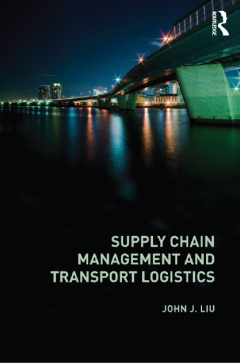
Supply chain management and transport logistics
- Edisi
- -
- ISBN/ISSN
- 978–0–203–80586–2
- Deskripsi Fisik
- -
- Judul Seri
- -
- No. Panggil
- TXT LO LIU s
- Edisi
- -
- ISBN/ISSN
- 978–0–203–80586–2
- Deskripsi Fisik
- -
- Judul Seri
- -
- No. Panggil
- TXT LO LIU s

the Palgrave handbook of humanitarian logistics and supply chain management
- Edisi
- -
- ISBN/ISSN
- 978-1-137-59099-2
- Deskripsi Fisik
- -
- Judul Seri
- -
- No. Panggil
- TXT LO KOV p
- Edisi
- -
- ISBN/ISSN
- 978-1-137-59099-2
- Deskripsi Fisik
- -
- Judul Seri
- -
- No. Panggil
- TXT LO KOV p

Port-focal logistics and global supply chains
- Edisi
- -
- ISBN/ISSN
- 978-1-137-27369-7
- Deskripsi Fisik
- xx, 240 p.
- Judul Seri
- -
- No. Panggil
- TXT LO ADO p
- Edisi
- -
- ISBN/ISSN
- 978-1-137-27369-7
- Deskripsi Fisik
- xx, 240 p.
- Judul Seri
- -
- No. Panggil
- TXT LO ADO p
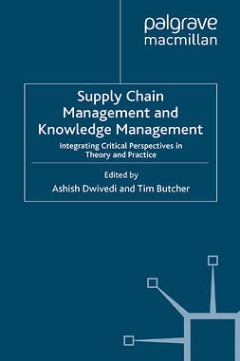
Supply chain management and knowledge management
- Edisi
- -
- ISBN/ISSN
- 978-0-230-23495-6
- Deskripsi Fisik
- xxx, 309 p.
- Judul Seri
- -
- No. Panggil
- TXT MG DWI s
- Edisi
- -
- ISBN/ISSN
- 978-0-230-23495-6
- Deskripsi Fisik
- xxx, 309 p.
- Judul Seri
- -
- No. Panggil
- TXT MG DWI s
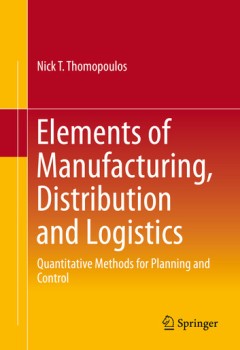
Elements of danufacturing, distribution and logistics: quantitative methods f…
- Edisi
- -
- ISBN/ISSN
- 978-3-319-26862-0
- Deskripsi Fisik
- -
- Judul Seri
- -
- No. Panggil
- TXT LO THO e
- Edisi
- -
- ISBN/ISSN
- 978-3-319-26862-0
- Deskripsi Fisik
- -
- Judul Seri
- -
- No. Panggil
- TXT LO THO e
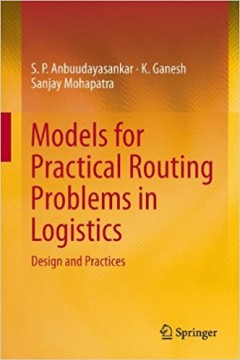
Models for practical routing problems in logistics: design and practice
- Edisi
- -
- ISBN/ISSN
- 978-3-319-05035-5
- Deskripsi Fisik
- -
- Judul Seri
- -
- No. Panggil
- TXT LO ANB m
- Edisi
- -
- ISBN/ISSN
- 978-3-319-05035-5
- Deskripsi Fisik
- -
- Judul Seri
- -
- No. Panggil
- TXT LO ANB m
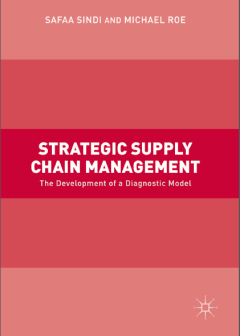
Strategic supply chain management: the development of diagnostics model
- Edisi
- -
- ISBN/ISSN
- 978-3-319-54843-2
- Deskripsi Fisik
- -
- Judul Seri
- -
- No. Panggil
- TXT MG Sin s
- Edisi
- -
- ISBN/ISSN
- 978-3-319-54843-2
- Deskripsi Fisik
- -
- Judul Seri
- -
- No. Panggil
- TXT MG Sin s
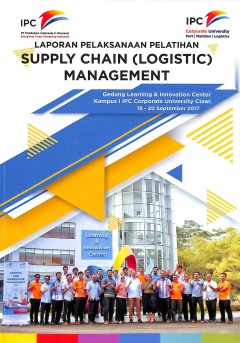
Laporan Pelaksanaan Pelatihan : Supply Chain (Logistic) Management
- Edisi
- 18 -20 September 2017
- ISBN/ISSN
- -
- Deskripsi Fisik
- 15 p., + atc., 21 cm.
- Judul Seri
- -
- No. Panggil
- IPC REP 2017 SUP s
- Edisi
- 18 -20 September 2017
- ISBN/ISSN
- -
- Deskripsi Fisik
- 15 p., + atc., 21 cm.
- Judul Seri
- -
- No. Panggil
- IPC REP 2017 SUP s

Supply chain logistics risks from the back room to the board room
Risks and uncertainties are ever more noted and factored into decision making today, and those stemming from supply chains are prominent in the competitiveness and viability of companies and organizations. The idea that every supply chain is made up of five internal chain/network constructs is presented, and these are physical, financial, informational, relational, and innovational. Further, fo…
- Edisi
- Vol. 34 No. 5, 2004
- ISBN/ISSN
- -
- Deskripsi Fisik
- 10 p.
- Judul Seri
- International Journal of Physical Distribution & Logistics Management
- No. Panggil
- ATC LO CAV s
 Karya Umum
Karya Umum  Filsafat
Filsafat  Agama
Agama  Ilmu-ilmu Sosial
Ilmu-ilmu Sosial  Bahasa
Bahasa  Ilmu-ilmu Murni
Ilmu-ilmu Murni  Ilmu-ilmu Terapan
Ilmu-ilmu Terapan  Kesenian, Hiburan, dan Olahraga
Kesenian, Hiburan, dan Olahraga  Kesusastraan
Kesusastraan  Geografi dan Sejarah
Geografi dan Sejarah